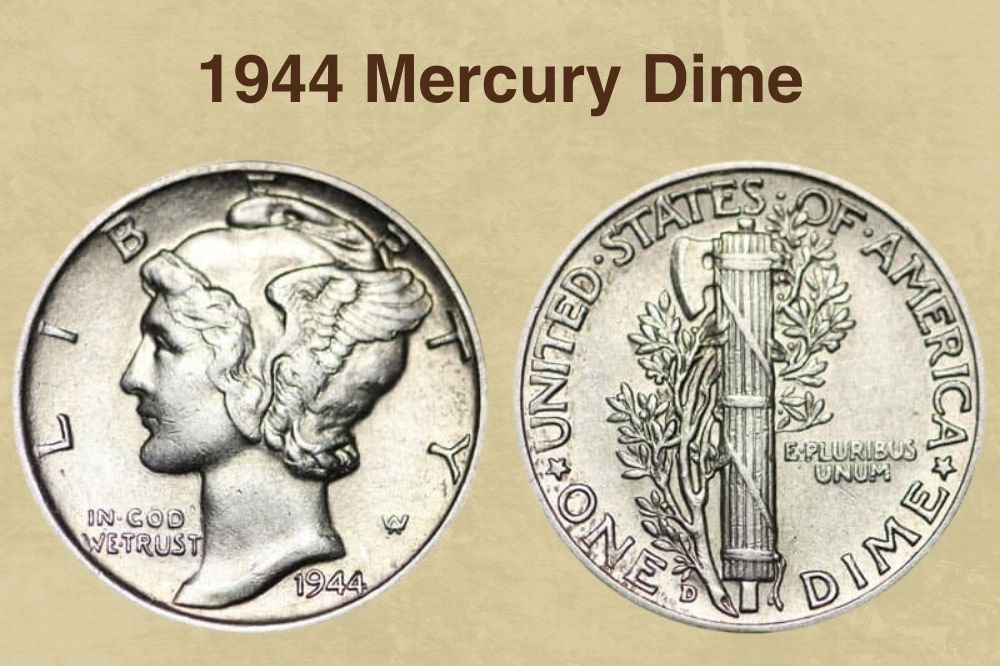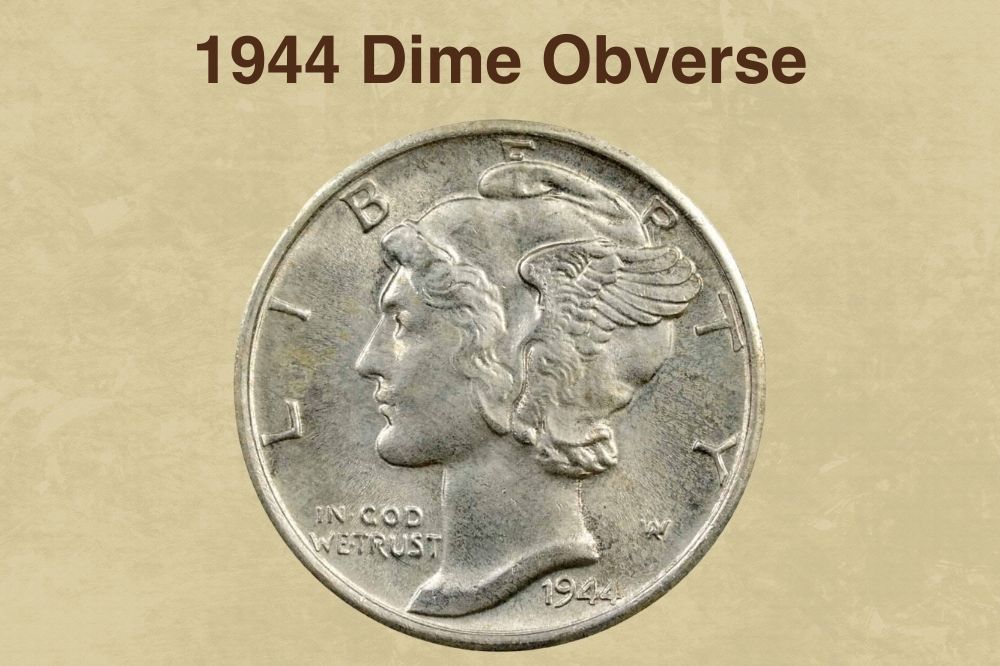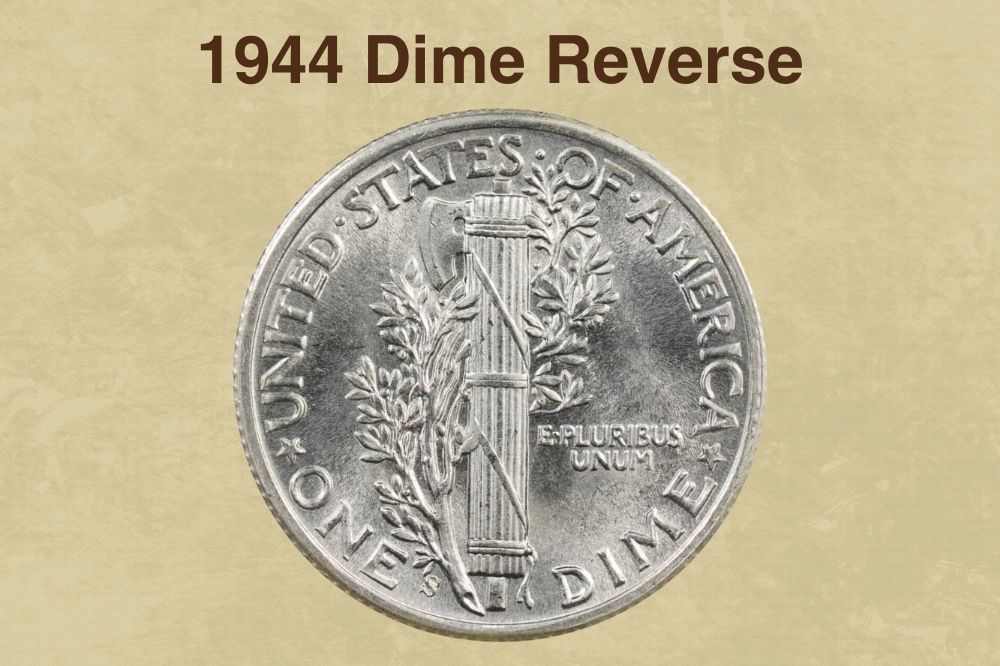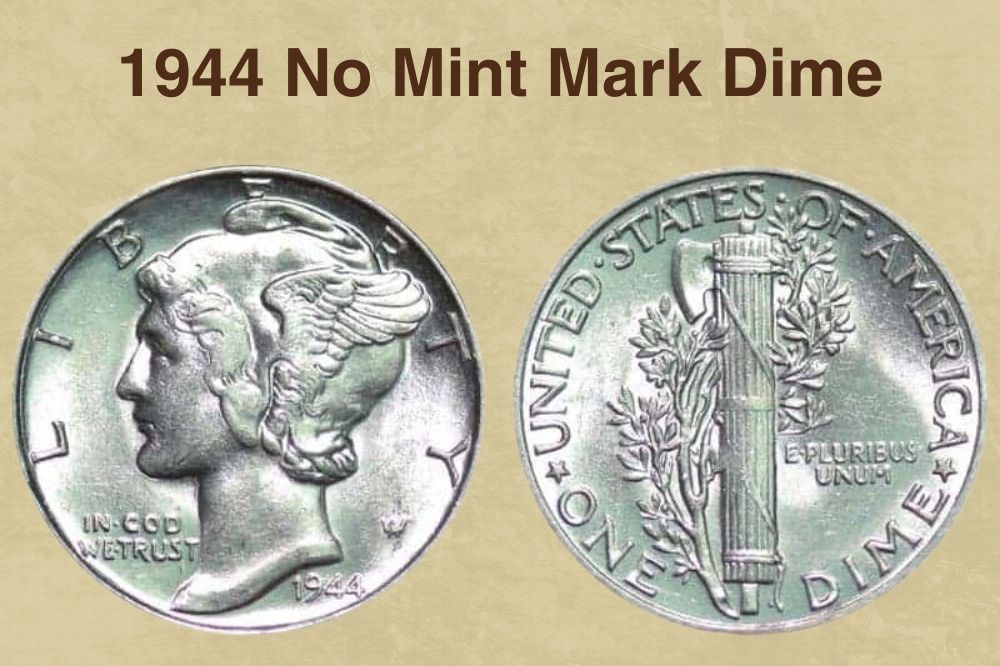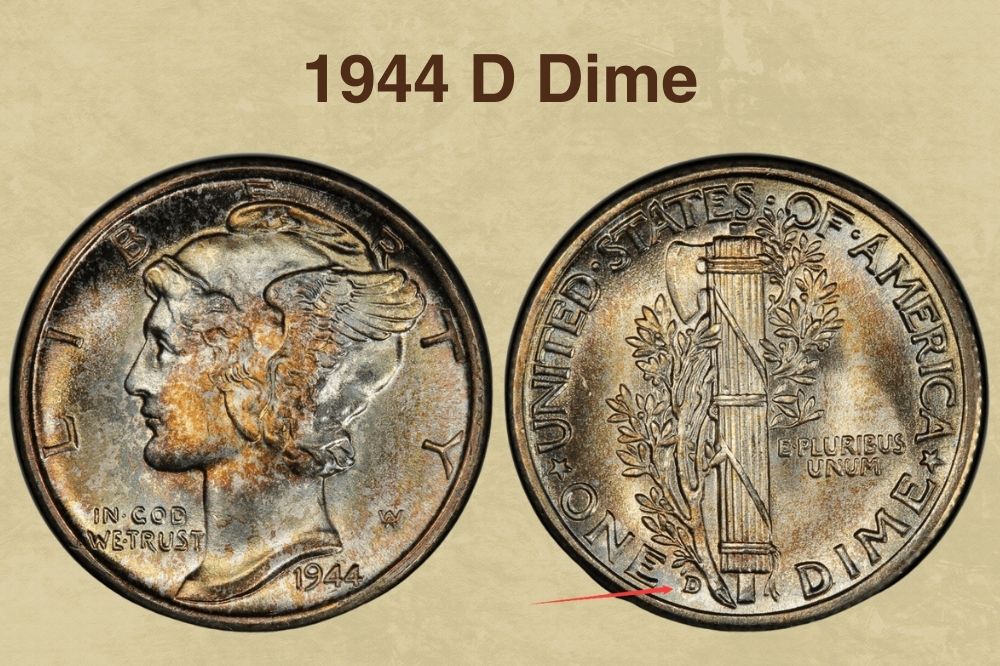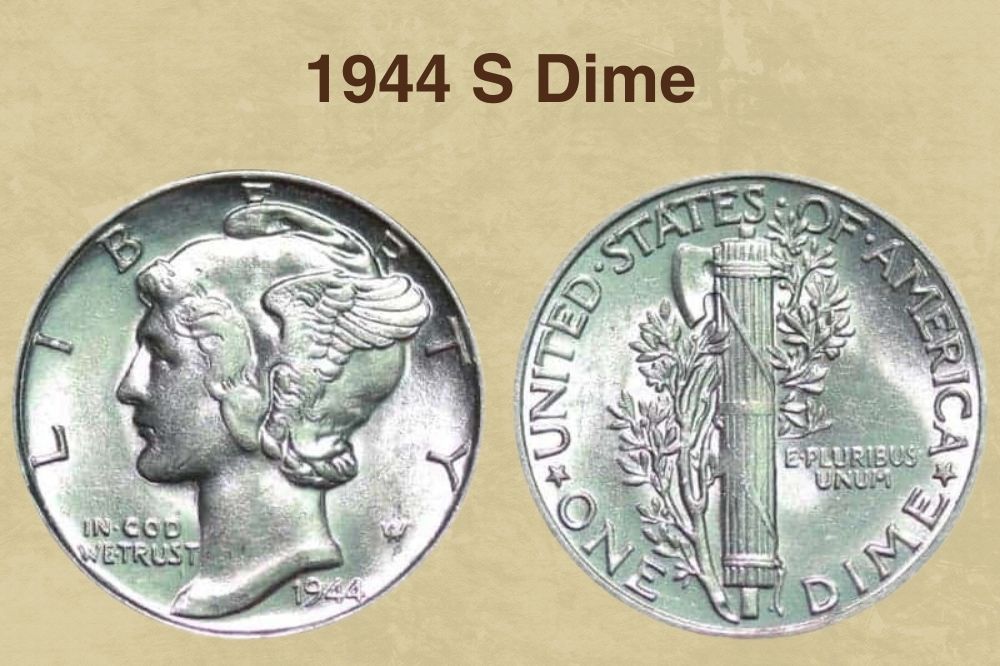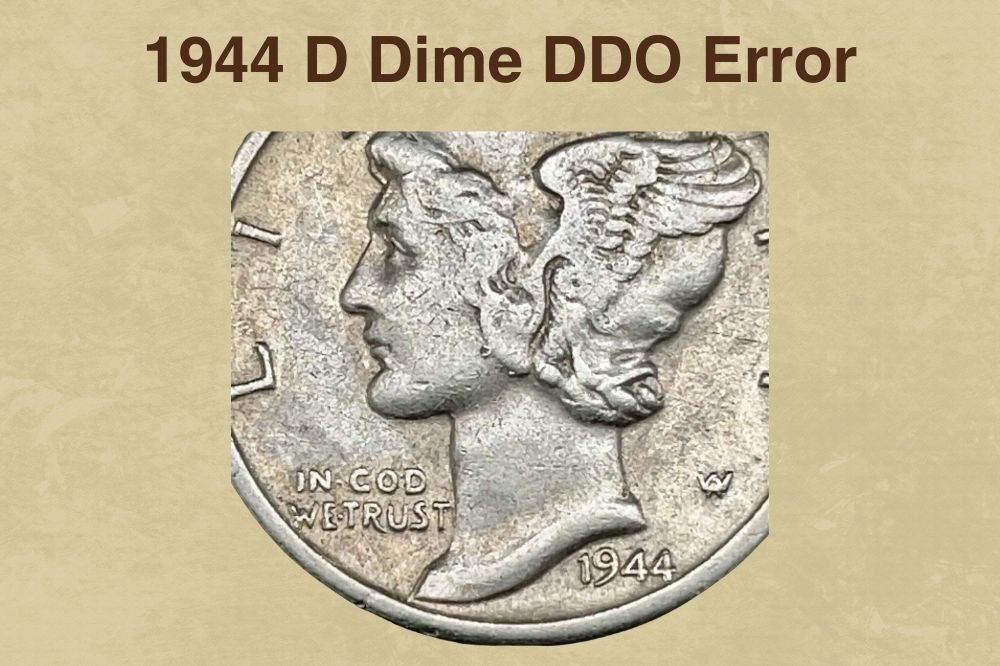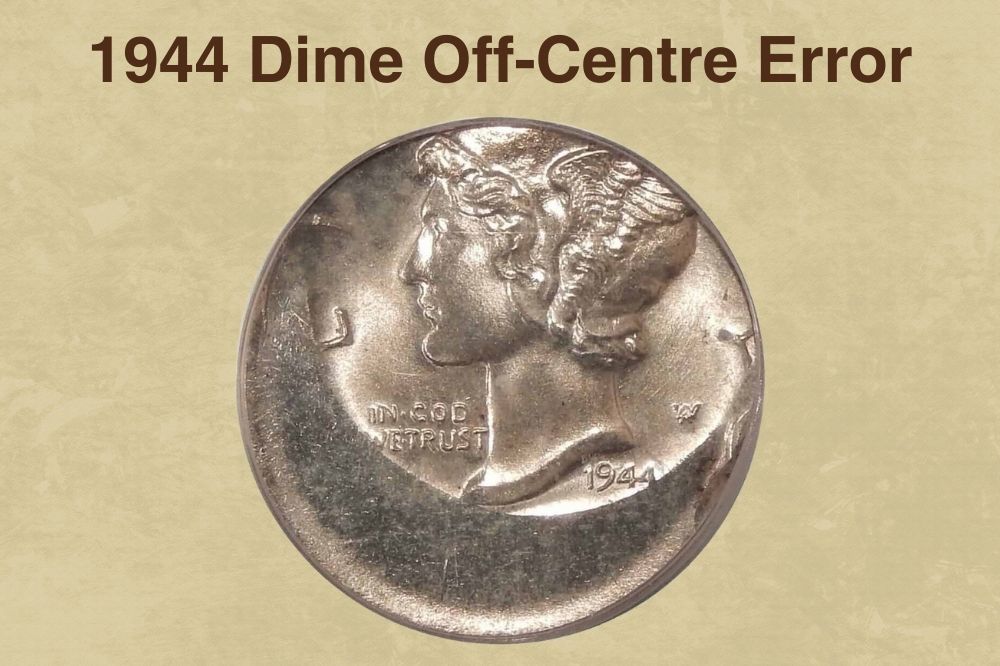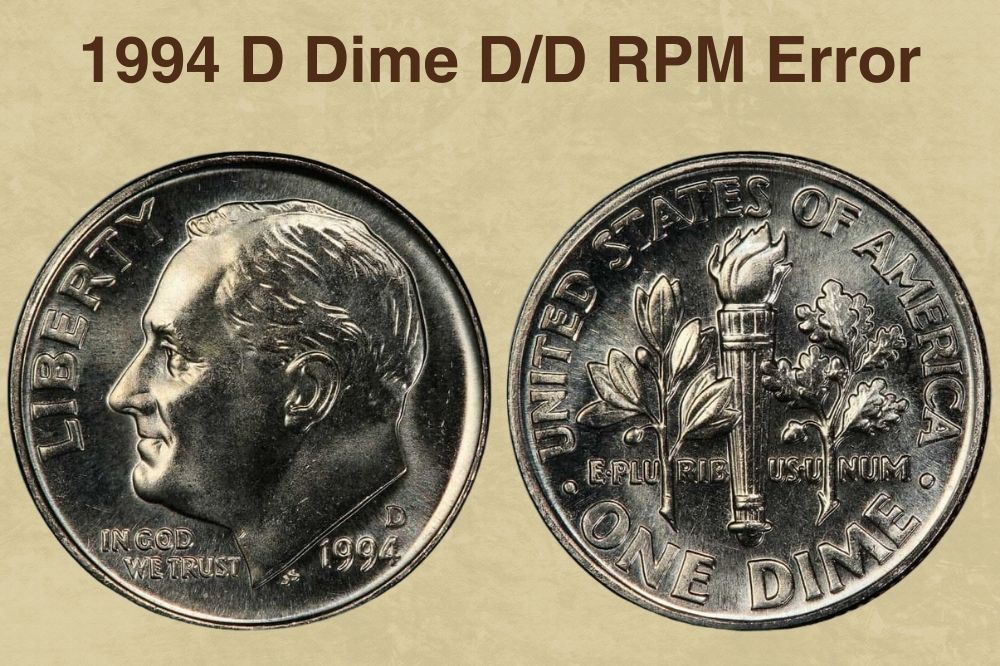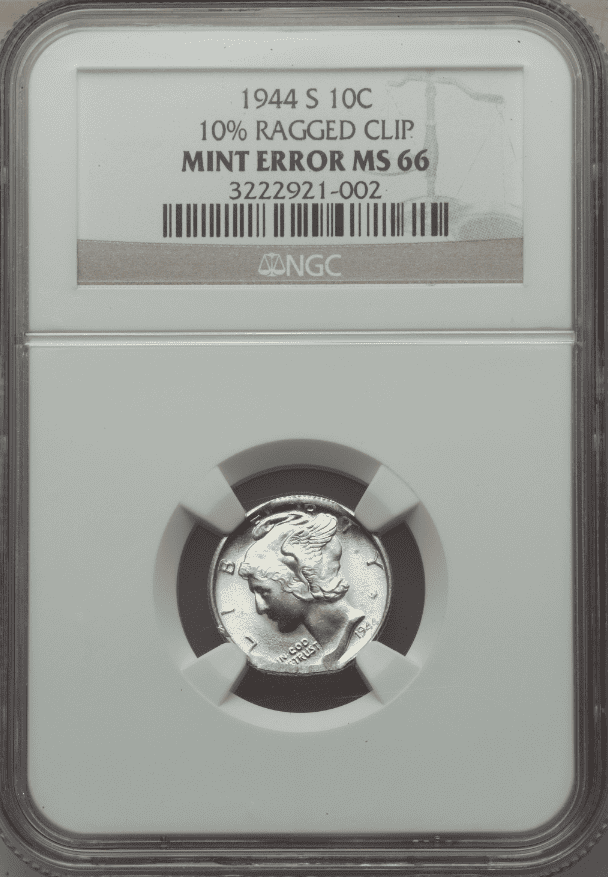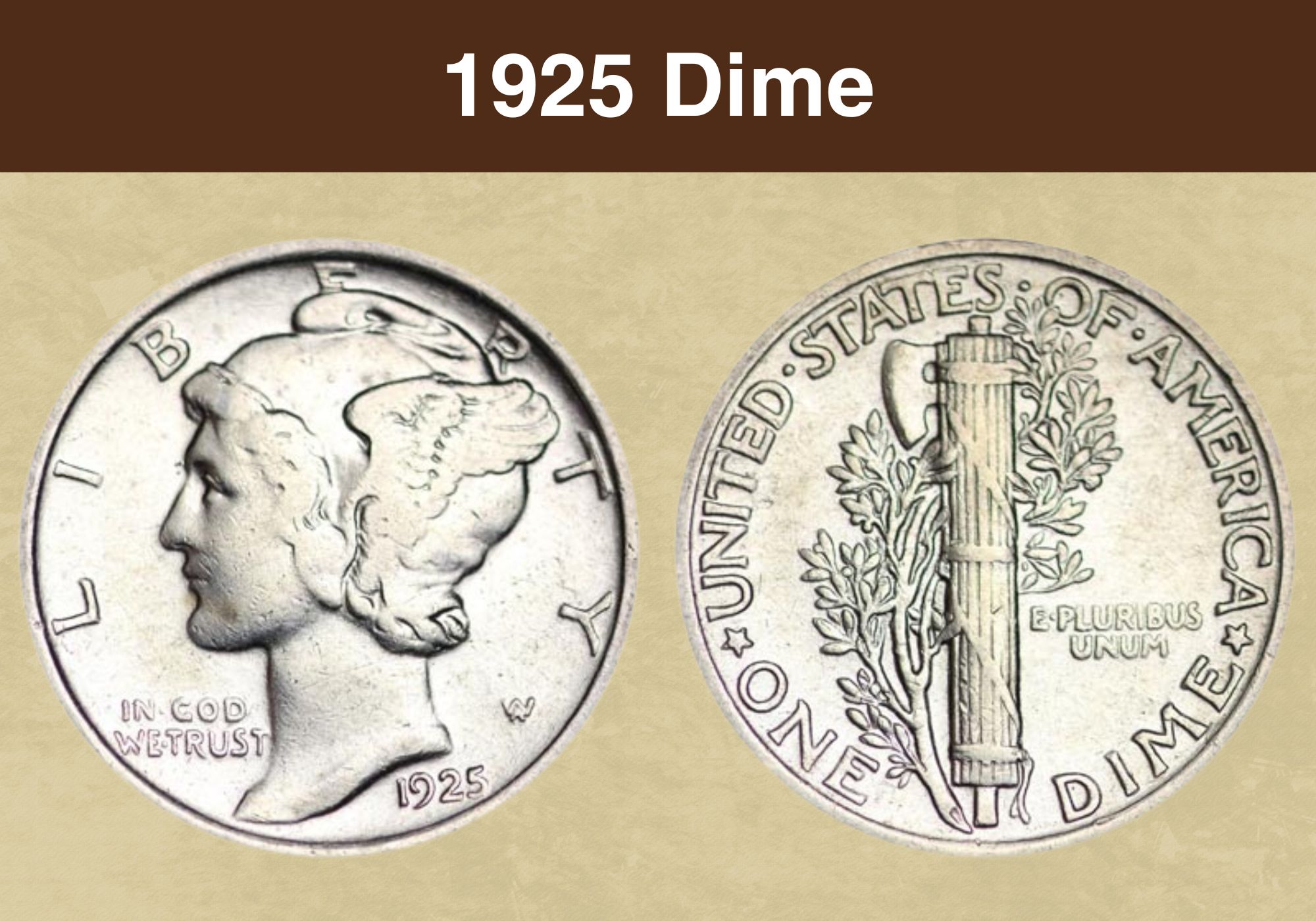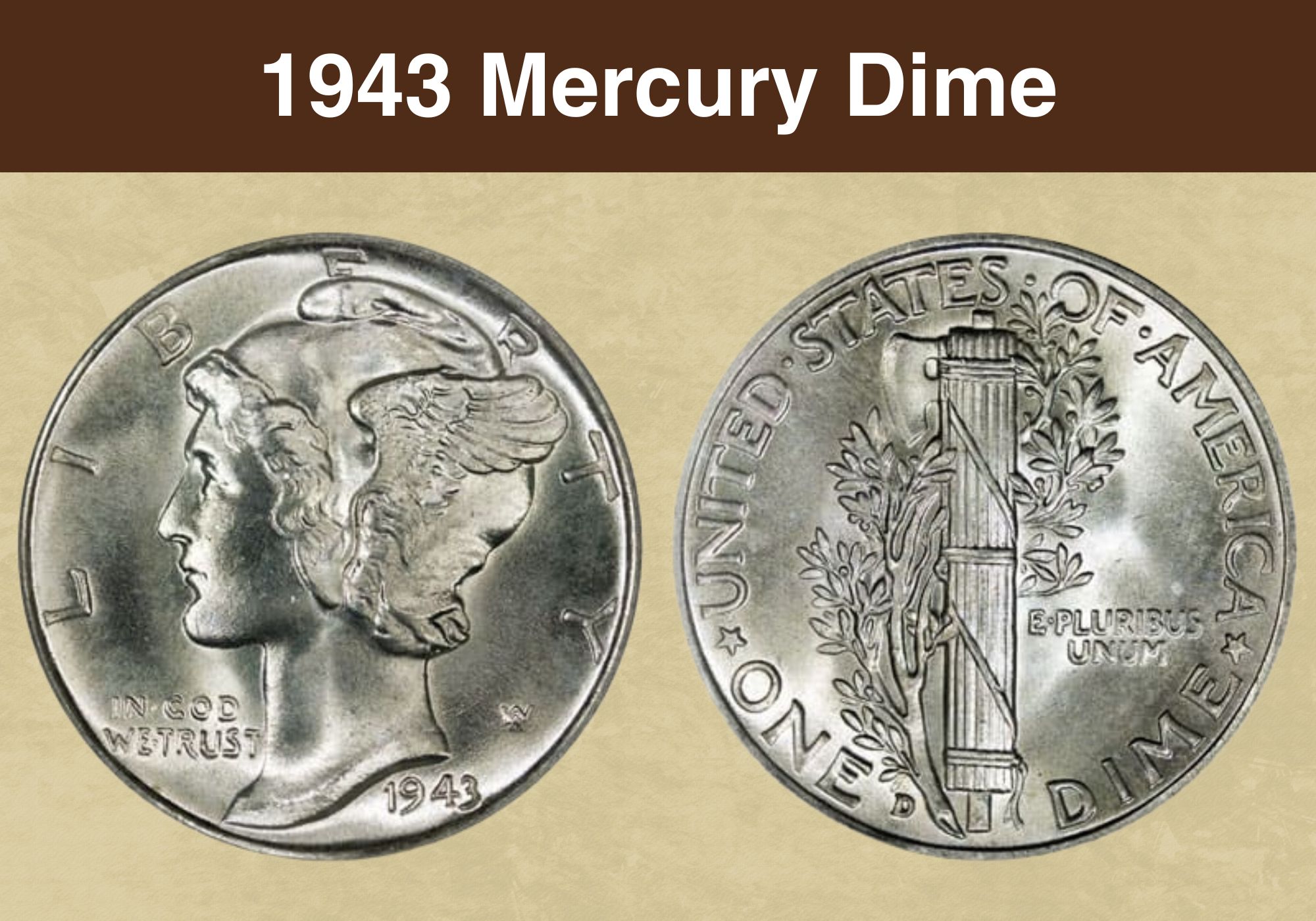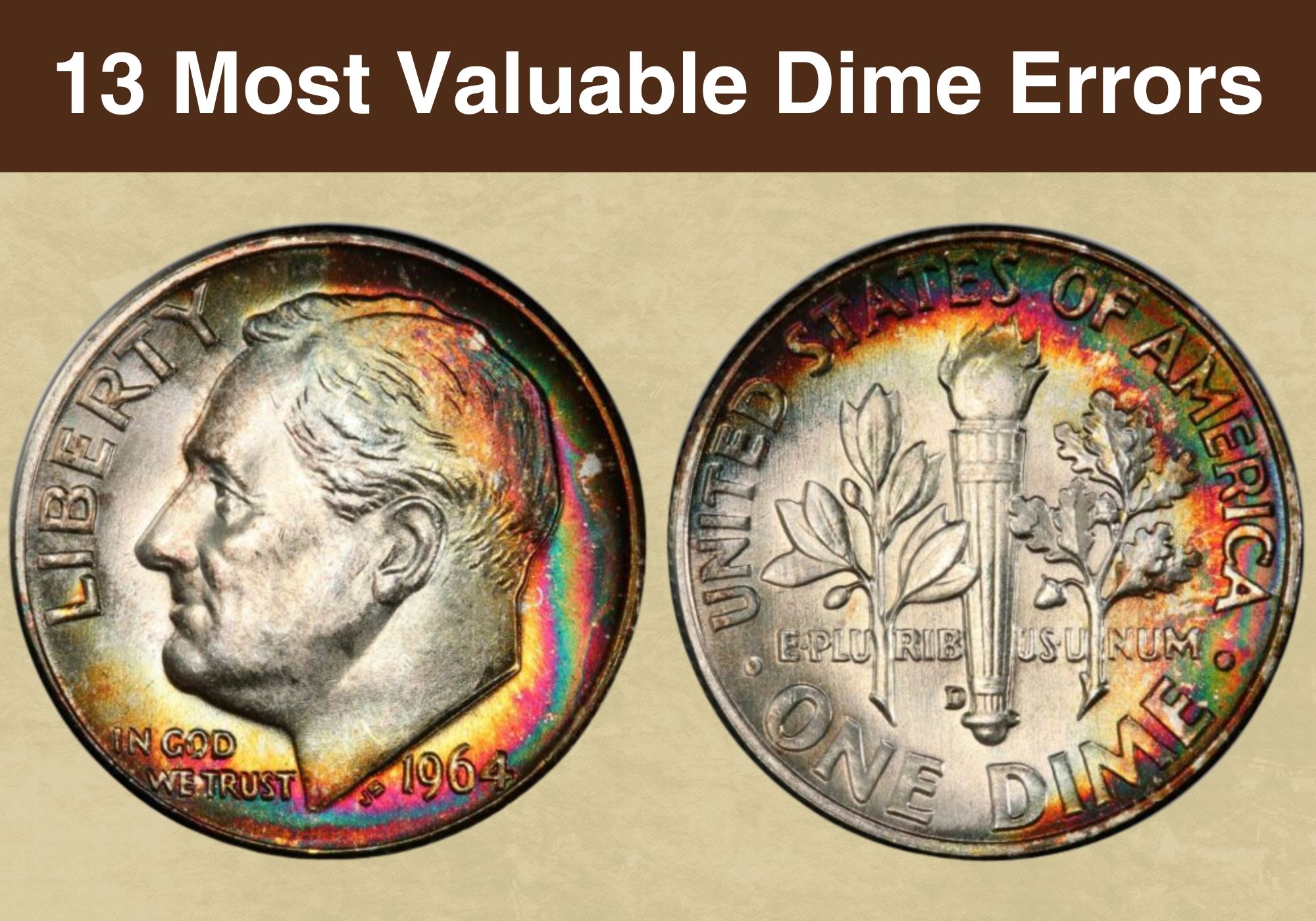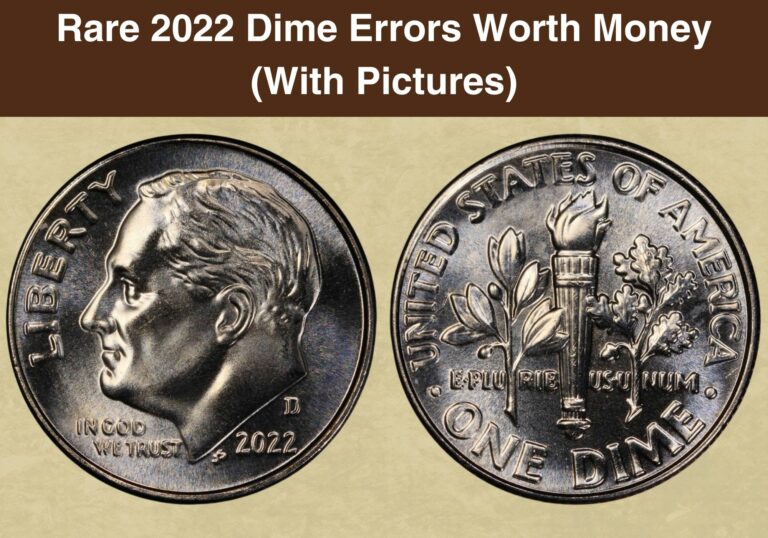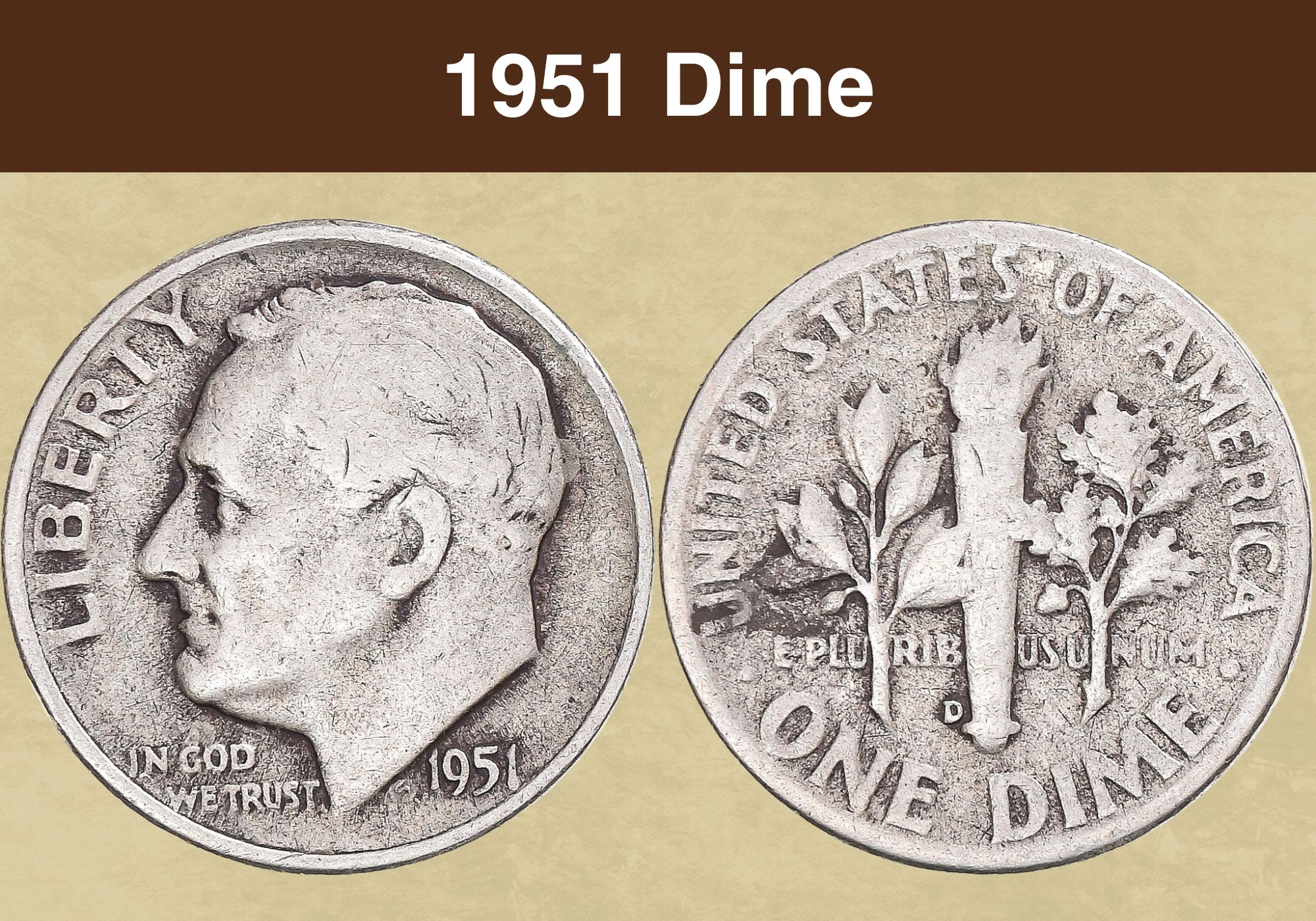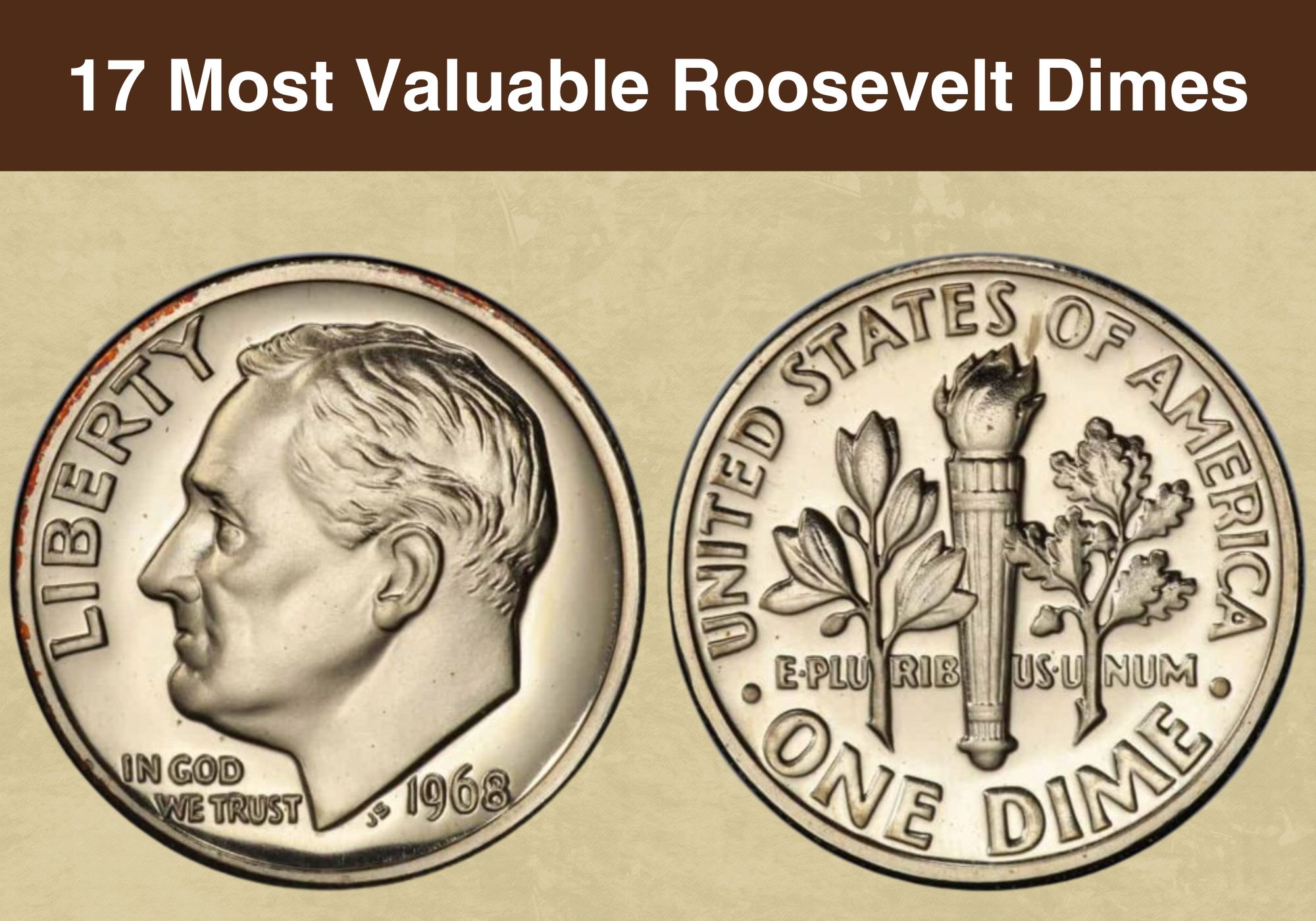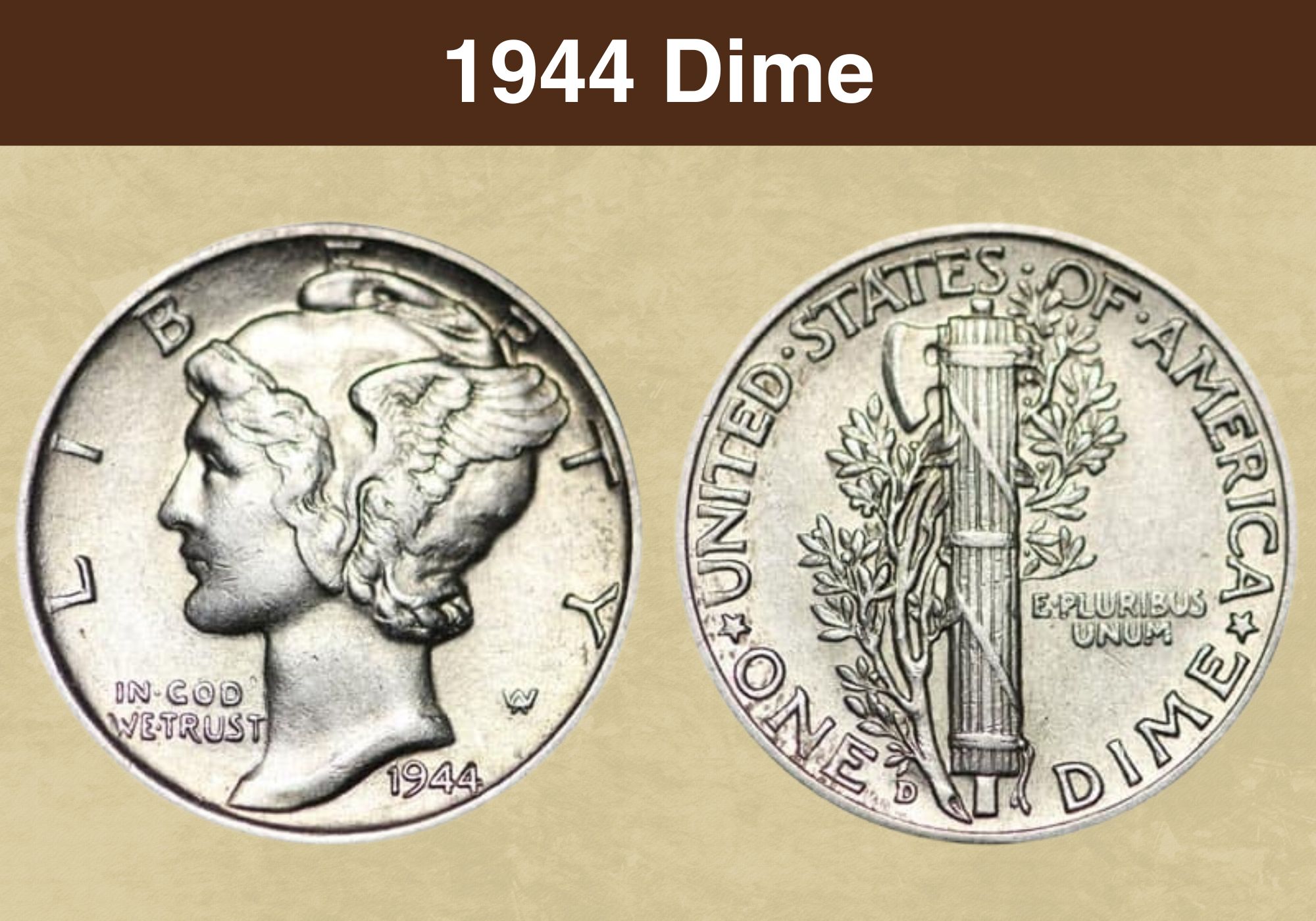
Coin Value Contents Table
From 1942 to 1945, many American coins were changed to aid the War Effort. The military needed nickel and copper, so pennies and nickels were adjusted accordingly, swapping out their base metals for silver and steel. But the dime was already 90% silver until 1965 so its composition didn’t shift. Let’s find out more as we explore the 1944 Dime Value and history.
1944 Dime Value Chart |
||||||
| Coin | MS 60 FB | MS 63 FB | MS 65 FB | MS 66+ FB | MS 67+ FB | MS 68 FB |
| 1944 (P) No Mint Mark Dime | $15 | $33 | $95 | $500 | $1,650 | $12,500 |
| 1944-D Dime | $15 | $33 | $62 | $115 | $365 | $1,025 |
| 1944-S Dime | $15 | $35 | $80 | $150 | $875 | $5,000 |
History of the 1944 Mercury Dime
The Dime is a 10-cent American coin introduced in 1792. Because of its high silver content, the physical size of the coin stayed small to ensure its melt value didn’t exceed its face value. Basically, if the coin was larger, it would be more valuable in its molten form, tempting people to melt it for profit. This has happened to lots of silver coins when spot prices spiked.
Today’s Roosevelt Dime was introduced in 1946 to honor the recent death of FDR, the 32nd US President. But in 1944, the Dime in use was the Mercury Dime. It was officially called the Winged Liberty Dime, but people mistook Miss Liberty for the Roman god Mercury due to the wings on her Phrygian cap. The feathers made the hat look like Mercury’s winged helmet.
The portrait of Winged Lady Liberty was based on Elsie Stevens, the wife of a famous poet and lawyer named Wallace Stevens. The model’s identity wasn’t public at first, but her family later admitted it. The couple rented rooms above the coin artist’s apartment, and he explains that Mrs. Stevens wore a stocking on her head to simulate the appearance of a Phrygian cap.
Adolph Weinman and the Mercury Dime
The artist himself was Adolph A. Weinman. He won a coin contest to replace the previous Barber Dime designed by the Chief Mint Engraver, Charles Barber. Weinman had been a student of Augustus Saint-Gaudens, who designed the $10 and $20 gold coins and clashed with Barber a lot. But his trainees and assistants still worked on later coins for the US Mint.
The Mint wasn’t especially happy with the Mercury Dime because it had a lot of details and high relief. This meant it needed additional strikes to render clearly, so it used up dies faster and cost the mint more money in production expenses. But the public loved it, and people call it one of the prettiest US coins ever! The mint had no plans to stop coining this dime.
But when FDR died late in 1945, they had to quickly place him on a coin. The Mercury Dime had been minted from 1915 to 1945 so it could legally be redesigned without killing time in Congress. That’s why the 1944 Dime earned retroactive interest from collectors. It was only later that it gained historic merit as the second-last year of the Mercury Dime, raising prices.
Also read: Top 17 Most Valuable Roosevelt Dimes Worth Money
Features of the 1944 Dime
When you’re describing the features of any coin, the obverse is the technical term for the heads side while the reverse is the tails side. The edge is the thinnest side, and it sometimes has ridges called reeds. The raised border is a collar or rim. Any images on the coins are known as devices, the background is called the field, and the words are legends or mottos.
The Obverse of the 1944 Dime
It shows a young Lady Liberty facing left. She’s wearing a winged Phrygian cap and some of her hair peeks through at the front. The legend Liberty curves around her head from her chin to her nape, with ER partly hidden by her headgear. In God We Trust is in front of her neck while AW for Adolph Weinman is behind her. The mint date sits below her neckline cut-off.
The Reverse of the 1944 Dime
It shows a fasces, which is a battle axe and a bundle of sticks wrapped with leather straps. An olive branch curves around the fasces. The device is centrally positioned on the coin, with E Pluribus Unum on its mid-right and the mint mark on the lower left, near the bottom of the olive branch. The coin reads United States of America up top and One Dime down below.
Other Features of the 1944 Dime
The 1944 Dime has 118 reeds on its edge. It’s 90% silver and 10% copper, weighing 2.5g. The coin is 17.91mm in diameter (0.705”). The version of Lady Liberty depicted on the coin was much younger than earlier coins. Weinman said he had placed wings on her cap to express freedom of thought, but some think he just liked feathers, a favored Saint-Gaudens feature.
1944 Mercury Dime Grading
Coins are graded using the Sheldon Scale from 1 (Poor) to Mint State (70). Proof coins and special strikes usually get their own letter grades – PF/PR or SP/SMS. But with Mercury Dimes, there’s an extra criterion known as FB or Full Bands. It describes the clarity of the horizontal leather straps tying the fasces. On FB coins, all the striped segments are visible.
| # | Grade |
|---|---|
| 1 | Basal State-1 |
| 2 | Fair |
| 3 | Very Fair |
| 4, 5, 6 | Good |
| 7, 8, 10 | Very Good |
| 12, 15 | Fine |
| 20, 30 | Very Fine |
| 40 | Extremely Fine |
| 50 | About Uncirculated |
| 60 | Mint State |
| 65 | Mint State |
| 70 | Mint State |
Please check our grading guides to know your coin scale, It’s the necessary step to know the exact value of your coin.
Check out now: How to Grade Mercury Dime?
1944 Dime Value Guides
Because the 1944 Dime is fine silver, its melt value is based on the current market price of this precious metal. So even in low grades, its 0.7 troy ounces can be worth a few dollars. But the truly expensive samples are driven by grade, rarity, and minting location. Let’s explore the 1944 Dime Value based on mintage figures, varieties, date of sale, and other coin details.
1944 No Mint Mark Dime Value
In 1944, the Philadelphia Mint made 231,410,000 business strikes or regular strike dimes for circulation. They had no mint marks. On 13th February 2016, an MS 67+ sold for $1,410. But half a step up, an MS 68 FB was far more expensive at $25,300 on 1st January 2009. Happy New Year to the seller! 8 coins are known in this grade so in 2023, they’re worth $12,500.
1944-D Dime Value
The Denver Mint made 62,224,000 dimes in 1944. They all had the D Mint Mark. But these coins aren’t as pricy as their Philadelphia counterparts. Recently, an MS 68 only sold for $720 on eBay. That was on 12th August 2022. An MS 68+ FB coin did a lot better though, selling for $5,040 on 28th April 2019. It’s worth $5,000 in 2024.
1944-S Dime Value
While the process of making proof coins has changed over the centuries, their purpose stays the same. They provide an ideal coin sample for the archives, and they offer additional cash for the mint as collectible coins. But from 1943 to 1945, the mint didn’t make proof coins.
It may have been triggered by the wartime economy – pun intended – but they didn’t resume proof coins until 1950. So in 1944, the San Francisco mint made 49,490,000 business strike dimes. They all had the S Mint Mark and were pretty high quality for regular strike dimes.
An MS 68 sold for $1,265 on 1st January 2006 – not nearly as exciting as 2009. But a sample graded MS 68 FB fared better, selling for $11,750 on 1st November 2013. Incidentally, dime graded MS 68+ FB, it’s estimated April 2024 value is $20,000.
Also read: Top 17 Most Valuable Mercury Dimes Worth Money
Rare 1944 Dime Error List
Coins that have mint errors are often more valuable than flawless samples. These mint mistakes range from natural deterioration e.g. cud breaks and gashes to mixed-up blanks and wobbly hands. You can also find mechanical mismatches if the feeder fingers pushed in the planchets too fast or too slow, causing misalignment, off-centers, and multiple coin strikes.
1944-D Dime DDO Error
A DDO is a doubled die error, also known as hub doubling. It happens when the hub is striking the die and something shifts slightly, placing the second strike a tad to the left or right. This double-vision effect is then copied to all coins struck using that die. The easiest place to spot this flaw is on the words and numbers. It’s about $50 to $200 in mint states.
1944 Dime Off-Centre Error
While DDOs (and DDRs) happen at the die stage, doubling can occur mechanically as well. That’s when the planchet moves between die strikes, causing a misalignment, double strike, or triple strike. If it moved before the first strike, you’ll get an off-center error, leaving part of the coin blank. In MS 64 FB, a 30% off-centre dime is $1,100 while a 20% off-centre is $515.
1944 Double Struck Flip-Over in Collar
A flip-over is when a coin that has already been stamped somehow ends up back in the press. But during its second pass, it flips, so you can see some of the reverse details on top of the obverse details. On this coin, you can see a shadowy ‘One Dime’ on the lower rim of the heads side. It also counts as a double strike since it was stamped twice. In MS 62, it’s $3,400.
1944 Broadstruck Error
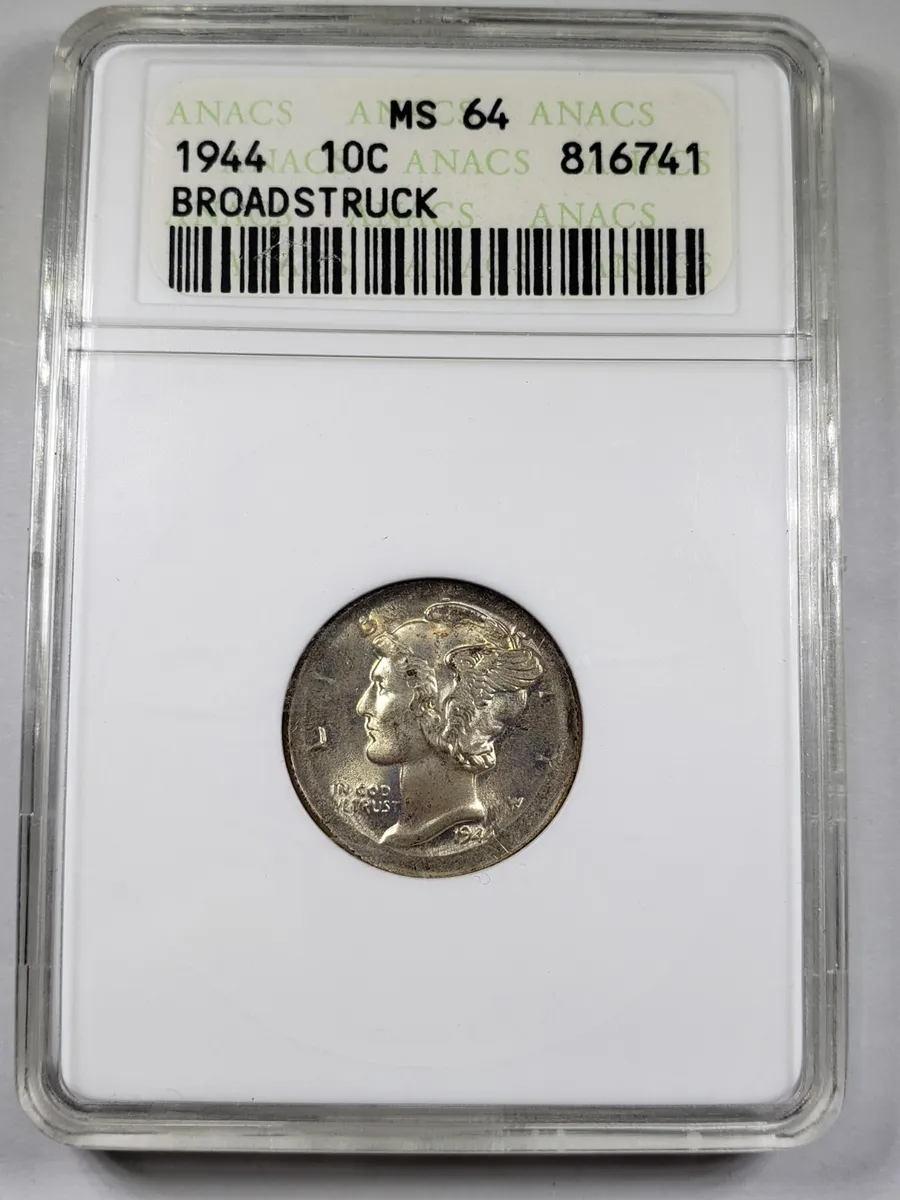
Collars help coins retain their shape and thickness which ensures the consistency of their metal content and face value. They used to be made in three-piece detachable collar molds. If any slipped off too early, the metal would spill over on that side aka a broadstrike or partial collar. It ends up with a thicker rim and flatter edge. In MS 63 FB, it’s worth $115 to $335.
1994-D Dime D/D RPM Error
RPM means re-punched mint mark. It’s when the mint mark was placed multiple times but the stamps weren’t on the exact same spot, so you see traces of the earlier mint mark below. This is a First Strike error or FS, meaning someone caught it within 30 days of the original release date. An MS 67 went for $255 in 2014 but eBay sold an MS 67 FB was $995 in 2021.
1944 Dime Obverse Struck Thru Error
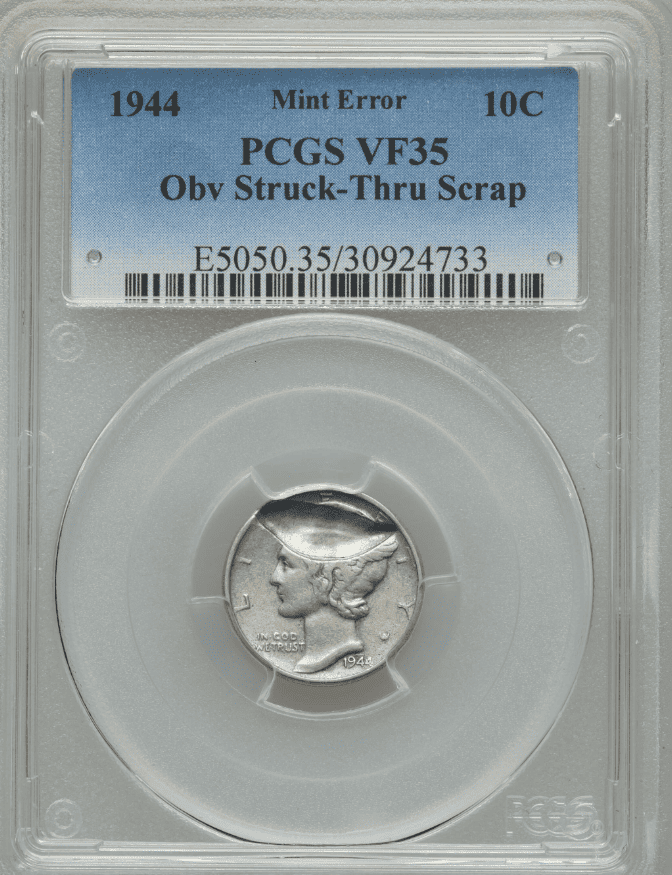
Sometimes, an external object slides between the die and the blank. This contaminant leaves a shadow of itself on the coin. The interloper could be a staple, a piece of cloth, or a planchet fragment. This is called a struck thru or strike-through error. It’s worth more if the item is still implanted on the coin. But even with a tell-tale stencil, this VF 35 dime was worth $100.
1944 Dime Clipped Planchet Error
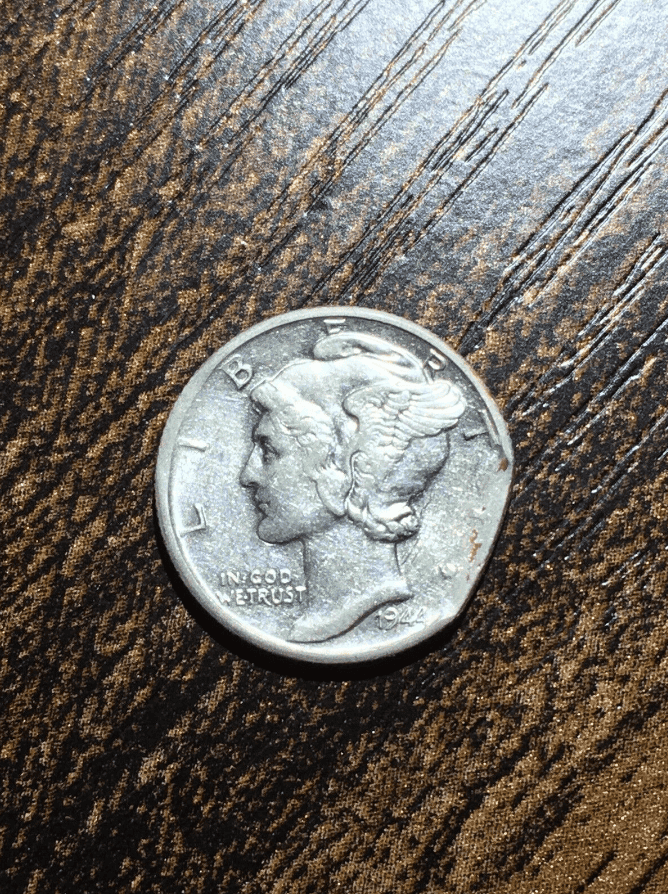
Blanks arrive at the mint in the form of a coiled metal sheet. It’s fed into a blanking machine to flatten it and punch it into discs. The leftover sheets are full of holes so they get recycled. But sometimes, segments with curved clips from the holes still end up getting stamped to make coins. This is a clipped planchet error. An AU 55 Dime with a 12% clip is worth $50.
1944-S Dime 10% Ragged Clip Error
That same planchet sheet fragment can have multiple curved clips if it had holes on more than one side. Or it can have a straight clip if it was near the edge of the sheet. Or it can have a ragged clip from a section that tore off. This coin had the latter flaw, and because it was already a high-grade coin, that raised its sale price significantly. In MS 66, it sold for $125.
Also read: 13 Most Valuable Dime Errors Worth Money
Where to Sell Your 1944 Dime ?
Now that you know the value of your coins, do you know where to sell those coins online easily? Don’t worry, I’ve compiled a list of these sites, including their introduction, pros, and cons.
Check out now: Best Places To Sell Coins Online (Pros & Cons)
1944 Dime FAQ
What Makes a 1944 Liberty Dime Valuable?
While it wasn’t widely thought of at the time, it was the second-last year of the Mercury Dime so the price hike was retrospective. And it’s 90% silver so it will always have added value based on the market price of molten silver. But it’ll be worth even more once it’s 100 in 2044.

